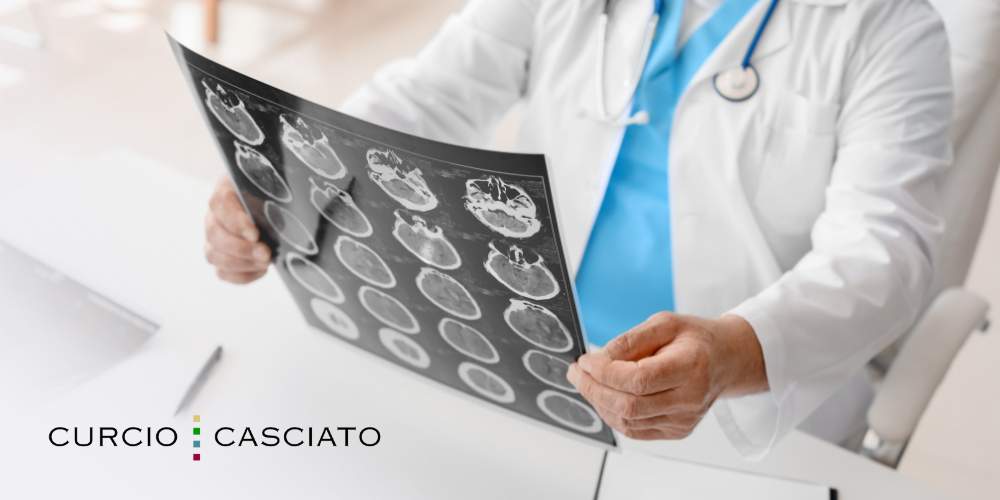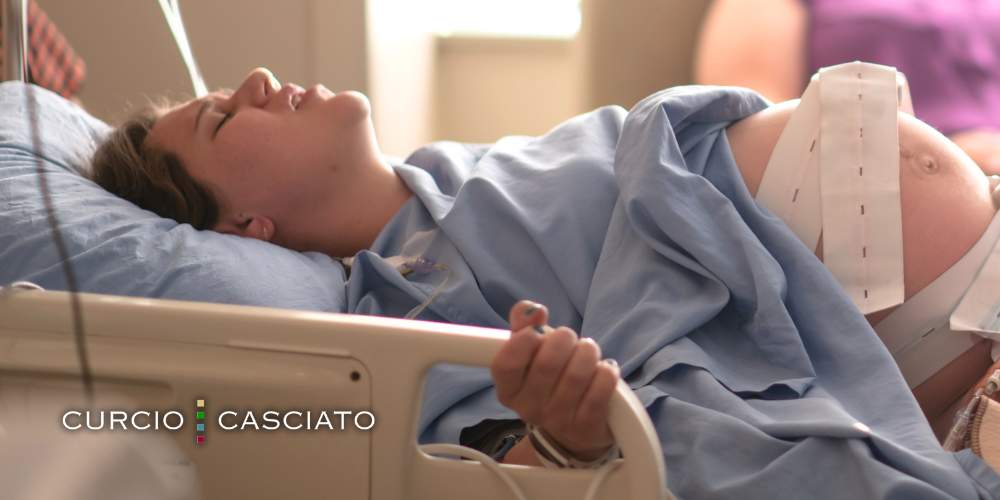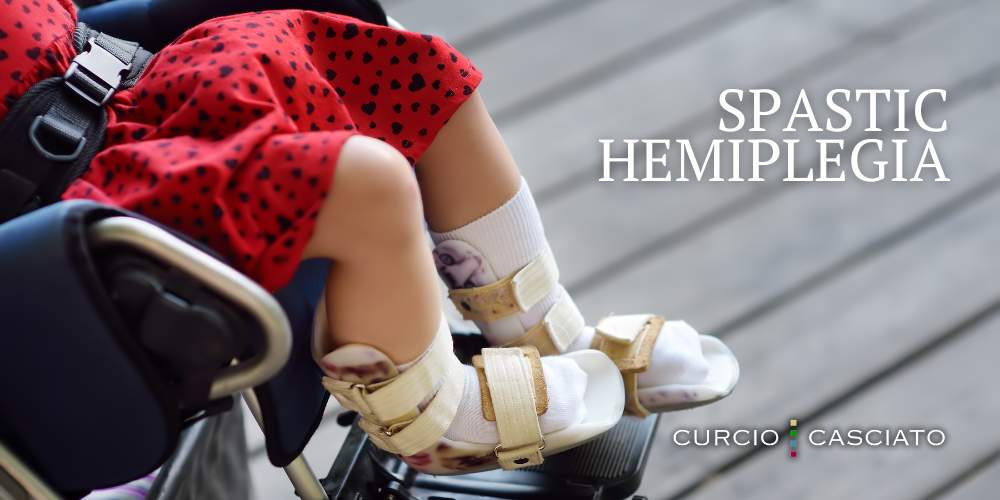Spastic hemiplegia, a form of cerebral palsy, is characterized by muscle stiffness and paralysis on one side of the body, often leading to long-term intellectual disabilities and significant financial burdens due to ongoing treatments. A common cause of spastic hemiplegia is birth injuries resulting from medical malpractice. However, there is a pathway to justice and financial restitution for affected families. By filing a birth injury lawsuit, victims can seek compensation for the immense physical, emotional, and financial toll of these injuries.
The experienced Chicago birth injury attorneys at Curcio & Casciato have extensive experience navigating spastic hemiplegic birth injury cases with compassion and expertise. If your family has been impacted by a birth injury resulting in spastic hemiplegia, take the first step toward recovery and justice. Call Curcio & Casciato at 312-321-1111 to schedule your free consultation today.
What is Spastic Hemiplegia?
Spastic hemiplegia is a form of cerebral palsy that accounts for approximately 70% of all cerebral palsy diagnoses. It primarily affects one side of the body, known as the affected side, involving the arm and leg. The spastic hemiplegia condition is linked to damage in the motor cortex and other areas of the cerebral cortex that control movement. The brain’s ability to manage muscle coordination and control is significantly compromised, leading to movement disorders characterized by muscle stiffness and awkward reflexes. Spastic hemiplegia often results from brain damage that can occur before, during, or shortly after birth. The impact on the spinal cord also contributes to the asymmetric physical limitations seen in affected individuals. Treatment focuses on managing symptoms through physical therapy and closely monitoring developmental milestones. Risk factors include premature birth, low birth weight, and maternal infections during pregnancy.
Spastic Hemiplegic Cerebral Palsy
Spastic hemiplegia cerebral palsy, a subtype of spastic CP, primarily affects one side of the body(known as the affected side). This form of cerebral palsy results from brain damage to areas such as the motor cortex and parts of the spinal cord that are crucial for muscle control and coordination. For many spastic hemiplegia children, the condition may arise due to brain injury sustained before, during, or shortly after birth. Treatment typically involves physical therapy to improve mobility and motor function, focusing on helping individuals manage the challenges associated with the asymmetry between their limbs and enhancing overall physical capabilities.

Spastic Cerebral Palsy Symptoms
Spastic hemiplegic cerebral palsy (spastic CP) presents with several distinct symptoms that significantly impact an individual’s daily life and development. The primary characteristics of this condition include spasticity, abnormal gait, muscle weakness on one side of the body, and developmental delays.
Spasticity
Spasticity and poor motor control are hallmark symptoms of spastic hemiplegic cerebral palsy, characterized by increased muscle tone or stiffness. This occurs due to damage in the motor cortex, the portion of the brain controlling movement, leading to abnormal signaling between the brain and muscles. This results in involuntary muscle spasticity and reduced flexibility, significantly affecting movement and posture and causing awkward, jerky movements and difficulty with fine motor skills. The severity of spastic hemiplegia cerebral palsy varies, with some experiencing mildly tight muscles and others severe muscle tightness that can cause joint deformities and pain.
Abnormal Gait
Abnormal gait is often one of the first symptoms noticed in spastic hemiplegia children. The altered walking pattern of children with spastic hemiplegia, due to muscle tone and strength imbalance between the affected side and normal side of the body, can manifest as limping, toe-walking, or scissor-like leg movements. Spastic muscles and muscle weakness disrupt normal walking coordination and rhythm, often requiring assistive devices for stability and independence.
Muscle Weakness on One Side
Muscle weakness on one side, or unilateral weakness, significantly affects those with spastic hemiplegia, usually impacting the same side as the stiff muscles, particularly the arm. This asymmetry in muscle strength in the affected arm or leg can lead to difficulties in performing everyday tasks that require bilateral coordination. The affected arm or affected side is not only less powerful but also less controlled, which can result in poor fine motor skills and overall dexterity compared to the unaffected arm or leg. This muscle weakness often necessitates the use of adaptive equipment, physical therapy, and occupational therapy.
Developmental Delays
Children with spastic hemiplegia often face developmental delays due to abnormal brain development that can manifest in various developmental disabilities.
Due to the spastic muscles and weakness associated with the condition, children with spastic hemiplegia may reach developmental milestones such as sitting, crawling, walking, and talking later than their peers. These delays in developmental milestones are not uniform and can vary widely in severity; some children with spastic hemiplegia may experience only minor setbacks, while other children with spastic hemiplegia might require ongoing support and intervention. Early intervention for spastic CP is crucial in managing these developmental delays, as it can significantly influence the child’s ability and quality of life.

What Causes Spastic Hemiplegia?
Spastic hemiplegic cerebral palsy arises predominantly from congenital factors, accounting for about 70% to 90% of cases. These congenital cases are often due to abnormalities in brain development or injuries to the brain that occur before, during, or shortly after birth. In contrast, approximately 10% to 30% of spastic hemiplegia or spastic CP cases are acquired, often stemming from medical malpractice. In these instances, the condition may develop due to preventable errors during the childbirth process or inadequate prenatal care, leading to a brain injury that results in spastic hemiplegia.
Congenital Abnormalities
Congenital abnormalities are the primary cause in the majority of spastic hemiplegia cases, occurring due to issues in the part of the brain controlling movement during pregnancy or a brain injury leading up to birth.
Congenital abnormalities can stem from a variety of factors, including genetic mutations, maternal infections, exposure to toxins, or complications during pregnancy, such as premature birth or insufficient oxygen supply (hypoxia) to the baby’s brain. The exact nature of these abnormalities often varies, ranging from underdevelopment of certain brain areas to physical damage like bleeding or stroke in the fetal or neonatal brain. These congenital issues disrupt the normal neural pathways essential for motor control and coordination, leading to the characteristic symptoms of spastic hemiplegia.
Medical Malpractice
Medical malpractice can lead to spastic hemiplegia or spastic CP when preventable errors occur during pregnancy, labor, or delivery, resulting in brain injury to the infant. Common examples of such negligence include:
- Improper Use of Birth-Assisting Tools: Excessive force or incorrect use of tools like forceps or vacuum extractors can cause direct trauma to the infant’s head, leading to brain injury.
- Failure to Monitor Fetal Distress: Inadequate monitoring of the baby’s heart rate and other vital signs during labor can miss signs of fetal distress, such as oxygen deprivation, which can cause brain damage.
- Delayed C-Section: Fetal symptoms for spastic hemiplegia are reasons for an emergency c-section. A delay in performing a cesarean section in critical situations, like prolonged labor or when the baby is in an abnormal position, can result in prolonged oxygen deprivation to the baby’s brain.
- Inadequate Response to Maternal Infections: Failing to diagnose and treat infections in the mother during pregnancy properly can lead to complications that adversely affect the baby’s brain development.
- Neglecting Prenatal Care: Insufficient monitoring of the mother’s and baby’s health during pregnancy can cause doctors to miss conditions like preeclampsia or gestational diabetes, which can affect the baby’s brain.
These instances of medical malpractice can have devastating consequences, leading to lifelong disabilities like spastic hemiplegia. A Chicago cerebral palsy attorney at Curcio & Casciato can help parents of children with spastic hemiplegia determine if they have a strong case.
Complications of Spastic Hemiplegic Cerebral Palsy
Spastic cerebral palsy, while primarily affecting muscle tone and coordination, can also lead to further complications that may greatly impact a child’s life and development. These complications include:
- Joint Deformities and Bone Displacement: Due to persistent muscle stiffness and imbalanced muscle growth, individuals may develop joint deformities or experience bone displacement, particularly in the hips.
- Pain and Discomfort: Chronic muscle spasticity often leads to pain, which can range from mild to severe and impact daily activities.
- Movement Difficulties: The muscle stiffness associated with spastic cerebral palsy can severely restrict movement, leading to challenges in performing everyday tasks and reduced independence.
- Digestive Issues: Gastrointestinal problems, including constipation and gastroesophageal reflux, are common due to the effects of spasticity on the digestive system.
- Respiratory Conditions: Individuals with severe forms of spastic cerebral palsy may experience respiratory issues due to weakened chest muscles and reduced lung capacity.
- Seizure Disorders: Some children who suffer a brain injury at birth also develop epilepsy, which is characterized by frequent seizures.
- Cognitive Challenges: While not universal, some individuals with spastic cerebral palsy may face suffering from a cognitive or intellectual disability such as attention deficit hyperactivity disorder (ADHD).
- Emotional and Social Challenges: The physical limitations and social perceptions of disabilities can lead to emotional difficulties for many children, including depression and social isolation.
These complications necessitate a comprehensive care approach, often involving a team of specialists to manage and mitigate the various aspects of the condition.

Spastic Cerebral Palsy Treatment
There is no known cure for this movement disorder, so treatments for children with spastic hemiplegia revolve around improving function and quality of life. Proper treatment includes:
Physical Therapy
One of the most common types of physical therapy is constraint-induced movement therapy, which helps create new neural pathways through specific movements and exercises to overcome the complications of decreased mobility. Physical therapists aim to enhance motor function, strength, and flexibility while reducing spasticity and preventing complications like contractures.
Occupational Therapy
Occupational therapists help patients develop daily living skills, improve fine motor skills, and provide adaptive strategies for everyday tasks.
Speech Therapy
Many children with spastic hemiplegia have difficulty speaking. Speech therapy addresses the child’s ability to speak clearly and even swallow food and water better.
Medication
Medication includes muscle relaxants like baclofen to reduce spasticity, anticonvulsants for seizure control, and pain relievers for discomfort.
Orthopedic Interventions
Orthopedic interventions involve braces or splints to support limbs, correct deformities, and improve function. Surgery may be necessary for severe contractures or skeletal deformities.
Assistive Technology
Assistive technology encompasses a range of devices, from simple tools to sophisticated equipment, to aid mobility, communication, and independence.
Can You Sue for Spastic Cerebral Palsy?
Yes, it is possible to sue for spastic cerebral palsy if it can be established that the condition was a result of medical malpractice. To successfully pursue a spastic hemiplegia lawsuit, the cerebral palsy lawyer must understand how to prove medical malpractice and demonstrate the 4 Ds of negligence:
- Duty of Care: The medical professionals had a legal obligation to provide a medical standard of care to the patient. In the context of childbirth, this includes ensuring the health and safety of both the mother and the baby during pregnancy, labor, and delivery.
- Breached Duty of Care: There must be evidence that the mother or child’s doctor failed to meet this standard of care. This breach could be due to actions taken or failures to act, such as improper use of delivery tools, inadequate monitoring of the baby’s health, or delayed responses to complications.
- Causation: The breach of duty must be directly linked to the injury. In other words, it needs to be shown that medical negligence was the cause of the spastic cerebral palsy.
- Damages: The plaintiff must demonstrate that the negligence resulted in specific damages. This can include physical and emotional harm, medical expenses, future care costs, and loss of potential earnings.
Proving these elements requires thorough investigation and often expert testimony. If these elements are successfully established, victims of birth injuries like spastic cerebral palsy can receive compensation for the hardships they have endured due to medical negligence.

Compensation for Cerebral Palsy Caused by Medical Malpractice
Damages in cases of cerebral palsy caused by medical malpractice typically include:
- Medical expenses
- Rehabilitation costs
- Specialized equipment
- Home and vehicle modifications
- Pain and suffering
- Lost earnings
- Loss of quality of life
These damages are intended to provide financial support and justice to families affected by cerebral palsy due to medical malpractice, ensuring they have the resources needed for the best possible care and quality of life.
Chicago Spastic Cerebral Palsy Attorney
If your child suffered spastic hemiplegia as a result of medical malpractice during birth, it’s crucial to seek expert legal guidance. The Chicago birth injury attorneys at Curcio & Casciato are highly experienced in this complex field and are dedicated to helping families like yours. We understand the emotional and financial challenges you face and are committed to securing the justice and compensation you deserve. Our Chicago medical malpractice lawyers will work tirelessly to investigate your case, consult medical experts, and advocate on your behalf.
Don’t navigate this difficult journey alone. Reach out to Curcio & Casciato today at 312-321-1111 to schedule a free consultation, where you can discuss your case, understand your legal options, and start the process towards obtaining the support and resolution you need.



